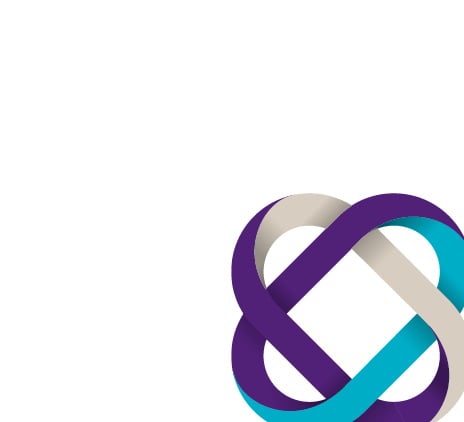-
Transactional advisory services
Find out more about the transactional advisory services of Grant Thornton Financial Advisory Services
-
Valuations
Find out more about the valuations services of Grant Thornton Financial Advisory Services
-
Mergers and acquisitions
Find out more about the merger and acquisition services of Grant Thornton Financial Advisory Services
-
Forensic and investigation services
Find out more about the forensic and investigation services of Grant Thornton Financial Advisory Services
-
Recovery & reorganisation
Find out more about the Recovery & reorganisation services of Grant Thornton Financial Advisory Services
-
Business risk services
Find out more about the business risk services of Grant Thornton Financial Advisory Services
-
Business consulting
Find out more about the business consulting services of Grant Thornton Financial Advisory Services
-
Capital market
Capital market
-
Corporate and business tax
Find out more about our corporate and business tax services.
-
Direct international tax
Find out more about our direct international tax services.
-
Global mobility services
Find out more about our global mobility services.
-
Indirect international tax
Find out more about our indirect international tax services.
-
Transfer pricing
Find out more about our transfer pricing services.
-
Litigation
Our lawyers and accountants can manage all defense measures provided not only by the Italian law, but also by EU regulations and conventions
-
Family business
Find out more about our Family business services.
-
Legal
The client can be assisted in every need and with the same care both on important operations or disputes and on simple matters

-
Back office outsourcing
Find out more about our Back office outsourcing services
-
Business process outsourcing
Find out more about our business process outsourcing services.
-
Compilation of financial statements
Find out more about our compilation of financial statements services.
-
Tax compliance
Find out more about our tax compliance services.
-
Electronic invoicing
Find out more about our electronic invoicing services
-
Electronic storage
Electronic storage is an archiving procedure that guarantees the legal validity of a digitally stored electronic document
-
Revaluation of corporate assets
Find out your civil and fiscal revaluation of tangible, intangible and financial assets
-
Human resources consulting
Find out more about our human resources consulting services.
-
Payroll
Find out more about our payroll services.
-
HR News
HR News the monthly information newsletter by Grant Thornton HR
-
Cybersecurity
GT Digital helps clients structure information security management internal functions, also through partially or totally outsourced functions
-
Agile and Programme Management
GT Digital provides support in the adoption and implementation of different portfolio management
-
Robotic Process Automation
Our “BOT Farm” can rely on digital workers able to help clients in routine activities, allowing employees to deal with more added-value activities
-
Data strategy and management
GT Digital can support clients in seizing the opportunities offered by Big Data, from the definition of strategies to the implementation of systems
-
Enterprise Resource Planning
We support clients in selecting the most appropriate ERP System according to their specific needs, helping them also understand licensing models
-
IT strategy
GT Digital supports clients in making strategic choices, identifying innovation opportunities, comparing themselves with competitors
-
IT service management
We can support with software selection and with the implementation of dedicated tools for the management of ICT processes
-
DORA and NIS 2
The entry into force of the DORA Regulation and NIS2 represents a major step towards the creation of a harmonised regulatory framework

Milan, January 2021 – After the sharp drop in optimism recorded in H1 2020, which marked the worst result since the Eurozone crisis of 2011-2012, business optimism has grown in the second half of the year (+14% compared to H1 2020), with 57% of businesses confident about the economic recovery in the next 12 month.
This trend was recorded in Italy, with an increase of 10 percentage points to 33% of business expecting an improvement of economic trends, as well as in Europe, with an increase in optimism of 7 percentage points, though still below the 2019 average (47%) with only 36% of optimistic businesses.
This is, in short, the scenario emerging from the latest edition of the Grant Thornton International Business Report (IBR), a global index based on interviews with the business leaders of 10,000 mid-market businesses in 29 countries.
A renewed confidence, which according to the Grant Thornton analysis, originates mainly from a considerable boost of investments and export expectations.
More than a third of businesses expect an increase in their exports in the next 12 months (34% compared to 25% in H1 2020), a positive signal that is reflected in a higher number of businesses planning to increase their revenues from international markets. It is worth noticing the Italian data, where the percentage of businesses optimistic about their export expectations has doubled compared to H1 2020 (32% compared to 16%), while the European increase remains lower (24% compared to 19%).
Optimism is also fuelled by investment expectations, particularly in new buildings (32%), plants and machinery (38%) and skilled staff (45).
Nonetheless, due to the devastating effects of the first and the second wave of the pandemic, businesses are still facing critic issues, thus a certain caution as concerns revenue and profit expectations. Although 45% of businesses expect a revenue increase in the next 12 months (+11 percentage points compared to H1), the percentage remains below 2019 pre-Covid levels (characterised by an average percentage over 50%).
An increase in profitability expectations for 2021 has also been recorded, from 32% to 44% in H2 2020, but also in this case the growth is below historical average data. Profitability expectations are rather weak in Europe compared to the global average, with only 29% of businesses expecting an increase. A similar percentage was recorded in Italy (28%).
Economic uncertainty is still considered as a major constraint to business development. After the peak of uncertainty in the first half of 2020 due to the spreading of the pandemic, only a marginal improvement in the number of businesses reporting uncertainty as a constraint has been recorded (-4%, from 66% in H1 to 62% in H2 2020). Italy data are in line with the global trend (61% in H2 compared to 68% in H1), whereas the percentage in Europe decreased to 55% in H2 (from 59% in H1).
Among the major constraints to the economic recovery is the shortage of orders, identified as a barrier to business growth by 52% of businesses (55% in H1 2020). The drop of only 3 percentage points compared to the first half of the year is partly the reason underlying the weak revenue expectations, despite a marked increase in optimism.
Shortage of finance remains an issue for 46% of businesses, which consider it a barrier to growth, a percentage unchanged from the first half of the year. A further constraint is represented by labour costs, reported as an issue by 50% of businesses (49% in H1 2020).
After the major disruption caused by the Covid-19 pandemic to the labour market in the first months of 2020, the number of businesses planning to hire new staff in the next 12 months has started increasing again, from 28% in H1 to 38% in H2, showing their more positive outlook for the future.
A slight optimisms also emerges from Italian data on employment expectations (from 21% in H1 to 26% in H2), similar to the trend recorded in the European Union (from 20% in H1 to 26% in H2). A considerable growth was recorded in the number of businesses planning to grant a salary increase to their employees, from 61% in H1 to 72% in H2 2020, on a global level.
As concerns the business sentiment towards the impact of Covid-19 on their growth trends, 44% of business expect their revenues to decline in the next 12 months, a drop of over 20 percentage points compared to H1 2020. 31% of businesses expect a decrease in revenues lower than 20%, while only 1% expects a drop equal (or over) 50%.
It is encouraging to note, however, that the number of businesses expecting a positive impact on their revenues has almost doubled, from 18% in H1 to approx. 36% in H2 2020.
In the second half of the year, the number of businesses which have started planning strategic measures to face the effects of the pandemic is still increasing. On a global level, 39% of businesses have increased the use of technology in their organisation, as well as their focus on internal security measures.
Almost 34% of businesses have started planning about the resources necessary for their recovery and another 31% started identifying the target products/services, clients and markets to focus on in future investment plans. The Covid-19 crisis helped raise businesses’ awareness on the need to be prepared to face new challenges to maintain their leadership (18% of Italian businesses, 27% in Europe and 29% globally) and highlighted the need to be able to adjust to changed consumer behaviour or competitive dynamics (16% of Italian businesses, 23% in Europe and 30% globally).
The implementation of new workplace safety measures and the alignment to new workplace regulatory requirements to avoid contagions, besides the use of technology, are the priority areas in preparation for the recovery of the business activity mentioned by the highest percentage of business, almost 39%.
“The latest edition of the Grant Thornton IBR - comments Alessandro Dragonetti, Managing Partner & Head of Tax of Bernoni Grant Thornton - reveals a renewed confidence, with businesses in the second half of the year more optimistic, though still careful, about the possible signs of recovery to relaunch their business, with a renewed interest in international markets.
Nonetheless, there are still critical issues, such as the uncertainty about the alignment to the latest regulations and red tape in the management of workplace safety procedures, in addition to major structural weaknesses, as shown by reduced growth margins on revenues and profitability.
In order to support growth, also with a view to a possible worsening of economic conditions in case of a new general lockdown, it is key to keep on focusing resources on the identified competitiveness drivers and on planning priority strategies, such as: the correct identification of target clients/products/markets, the adoption of innovative and secure technology, the planning of ways to face market competitiveness, as well as preparing to meet the challenge of the evolution of new consumption trends.